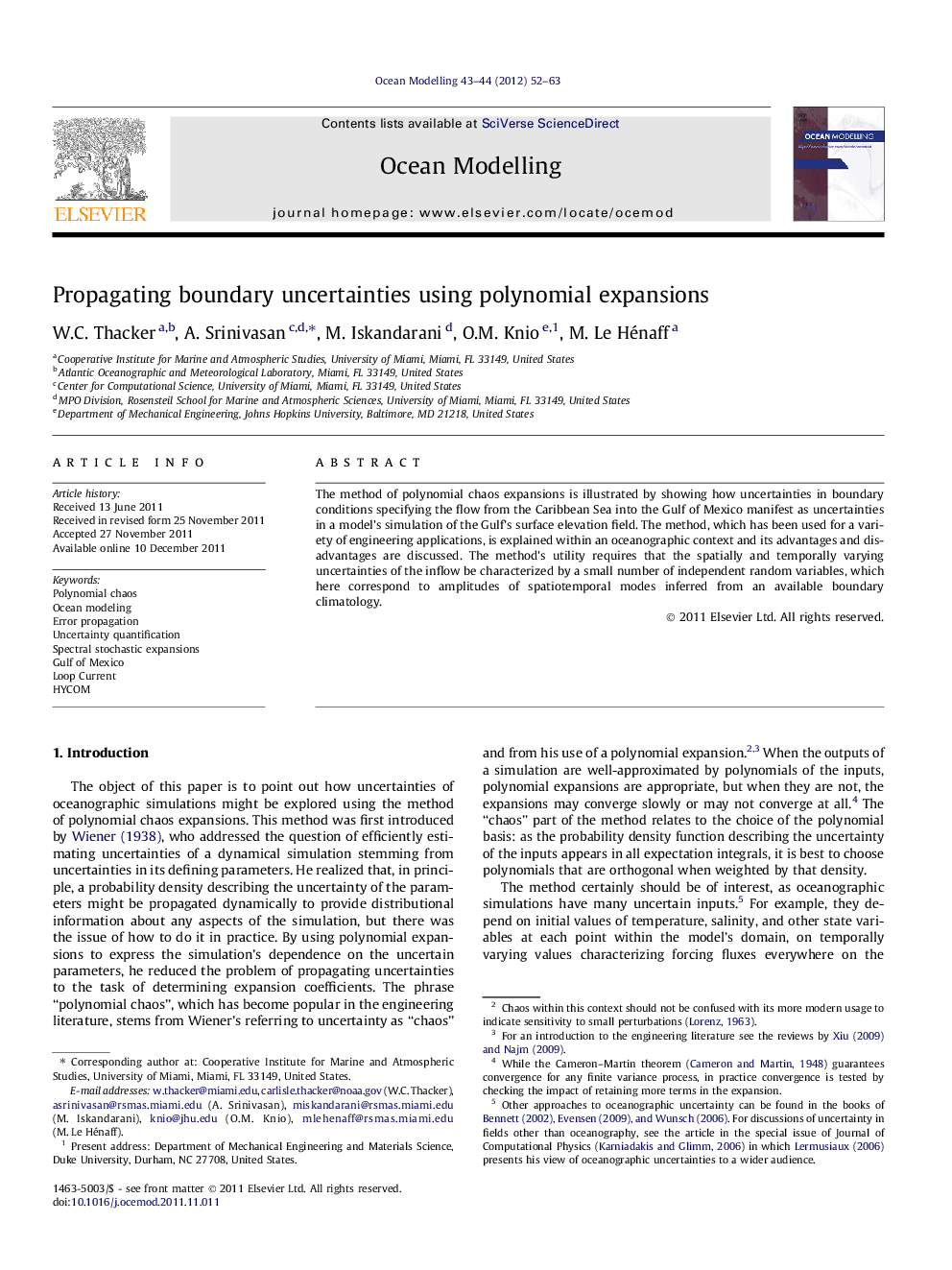| Article ID | Journal | Published Year | Pages | File Type |
|---|---|---|---|---|
| 4552238 | Ocean Modelling | 2012 | 12 Pages |
The method of polynomial chaos expansions is illustrated by showing how uncertainties in boundary conditions specifying the flow from the Caribbean Sea into the Gulf of Mexico manifest as uncertainties in a model’s simulation of the Gulf’s surface elevation field. The method, which has been used for a variety of engineering applications, is explained within an oceanographic context and its advantages and disadvantages are discussed. The method’s utility requires that the spatially and temporally varying uncertainties of the inflow be characterized by a small number of independent random variables, which here correspond to amplitudes of spatiotemporal modes inferred from an available boundary climatology.
► The method of polynomial chaos expansions for propagating uncertainties through a dynamical system is explained within an oceanographic context. ► Consequences of erroneous boundary conditions describing flow from the Caribbean on the Gulf of Mexico’s surface elevation illustrate the method. ► Boundary flow is characterized by two multivariate spatiotemporal modes, each of which has a random amplitude with specified statistics. ► HYCOM, a high-resolution oceanographic model connects the boundary information to the evolving surface-elevation field. ► Means, standard deviations, covariances, and probability densities of surface elevation are computed.
